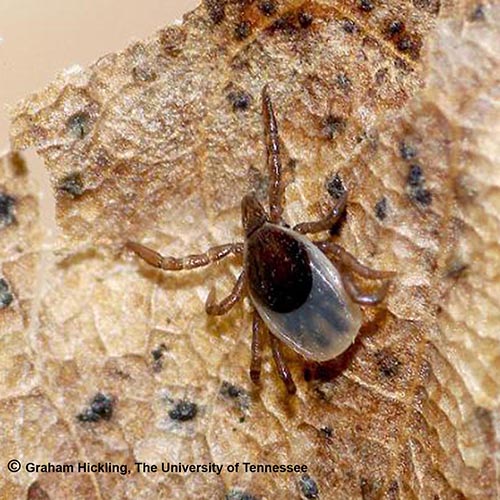
Listen to this Episode:
- From this webpage:
- Find the media player located under the episode picture.
- Click on the green triangle to listen to the audio for this episode.
- From your favorite podcast listening platform:
- Search for “Backyard Ecology.”
Show notes:
Lyme disease is our most common tick-borne disease and it is estimated that there are around 400,000 cases each year. Black-legged ticks or deer ticks (Ixodes scapularis) are the only species of tick that carries Lyme disease in the eastern U.S. Although deer ticks are found throughout the eastern U.S., Lyme disease is much more common in the northeast, than it is in the southeast.
In this episode of the Backyard Ecology Podcast, we talk with Dr. Howard Ginsberg. He is a Research Ecologist with the Eastern Ecological Science Center of the U.S. Geological Survey. Recently, he and a number of his colleagues published a journal article about their research into why Lyme disease is more common in the north.
Our conversation covers a number of different topics from basic tick biology to the research and their conclusions. One of the things that really stood out to me about their research was just how complicated the issue is. It isn’t as simple as just looking at how common deer ticks are in your area. Instead, deer ticks in different parts of the country often choose different hosts, and not all of those hosts are equally likely to transfer the bacterium that causes Lyme disease. The immature ticks also have different behavioral patterns depending on where they are from. All of these factors help to contribute to our risk of catching Lyme disease in different regions of the country.
Ticks may not be our favorite organisms. I’ll admit to having no great love for them. But, as people who enjoy nature and presumably spend quite a bit of time outside, I think it is important to understand our risks of catching different tick-borne diseases. The recent research by Dr. Ginsberg and his colleagues shines an important light on how complicated this topic is and how behavioral and ecological factors at a regional level can impact risks of contracting Lyme disease. This is one of those situations where the answers can be complicated, but at the same time fascinating and intriguing. It also shows just how much we still have to learn.
Links:
- Howard Ginsberg’s USGS research profile
- Journal article
- Other resources
- My email: shannon@backyardecology.net
Episode image:
- Deer tick nymph
- Photo credit: Graham Hickling, University of Tennessee, public domain

Backyard Ecology: Exploring Nature in Your Backyard
Nature isn’t just “out there.” It’s all around us, including right outside our doors. Hi, my name is Shannon Trimboli, and I am the host of Backyard Ecology. I live in southcentral Kentucky and am a wildlife biologist, educator, author, beekeeper, and owner of a nursery specializing in plants for pollinators and wildlife conservation. I invite you to join me as we ignite our curiosity and natural wonder, explore our yards and communities, and improve our local pollinator and wildlife habitat. Learn more or subscribe to my email list at www.backyardecology.net.

Leave a Reply